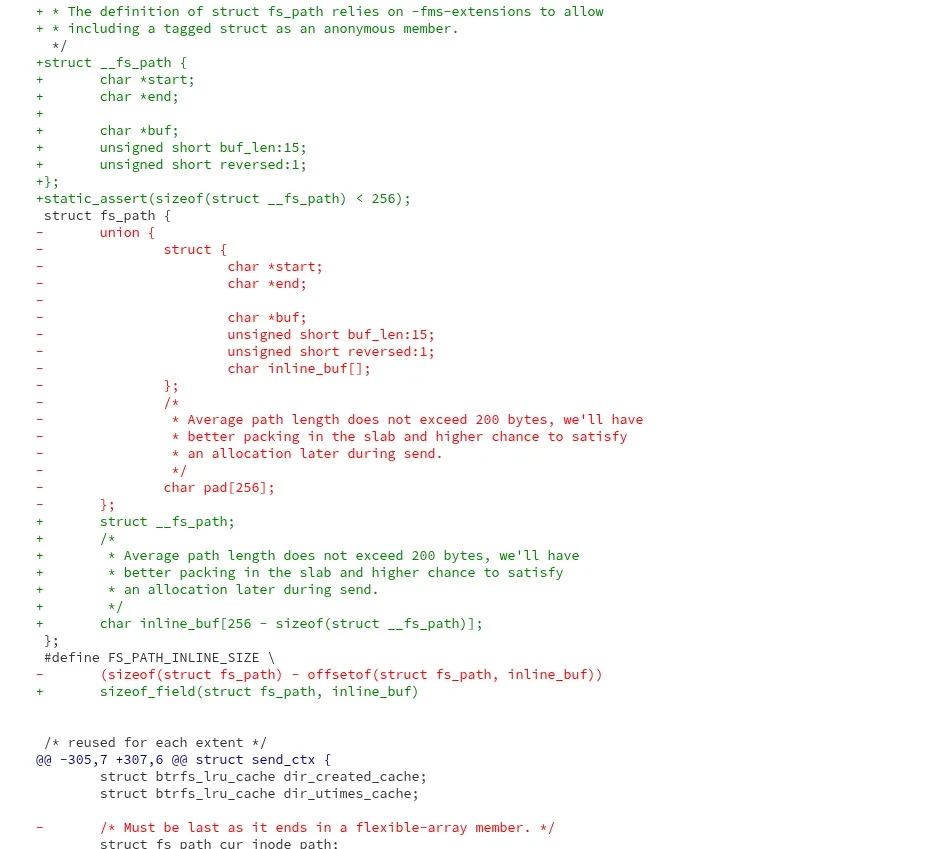Posts
579Following
105Followers
119- Linux Kernel Developer @ Oracle (Linux Kernel MM) (2025.02 ~ Present)
- Reviewer for the Linux Slab & Reverse Mapping subsystem
- Former Intern @ NVIDIA, SK Hynix, Panmnesia (Security, MM and CXL)
- B.Sc. in Computer Science & Engineering, Chungnam National University (Class of 2025)
Opinions are my own.
My interests are:
Memory Management,
Computer Architecture,
Circuit Design,
Virtualization
Vlastimil Babka 🇨🇿🇪🇺🇺🇦
vbabka@mastodon.socialWith the current RAM prices, let me remind you of my solution from 2017 that unfortunately wasn't merged, but maybe it's time to revisit it? https://lore.kernel.org/all/20170401211813.15146-1-vbabka@suse.cz/
Harry (Hyeonggon) Yoo
hyeyoohttps://lore.kernel.org/all/20230401094658.11146-1-vbabka@suse.cz
Phoronix
phoronix@masto.aiLinux 6.19 Goes Ahead And Enables Microsoft C Extensions Support
Last month I reported on Linux 6.19 looking to enable Microsoft C Extensions support throughout the Linux kernel with setting the -fms-extensions compiler option to allow Microsoft C Extensions when building the kernel. Linus Torvalds today merged that support without objections...
https://www.phoronix.com/news/Linux-6.19-Enables-MS-Ext
Harry (Hyeonggon) Yoo
hyeyoowhen I was a hobbyist I wanted to add fancy new amazing features to the kernel. now I realize that, at work, I spend moooost of my time reviewing and discussing things, and fixing bugs!
**checks how many patches I better review until the next merge window comes**
Harry (Hyeonggon) Yoo
hyeyooHope this is helpful when I'm testing something or reviewing complicated code
Wuzzy
Wuzzy@cyberplace.socialNew TLDs just dropped:
🌐 .com: community (discussion board)
🌐 .org: oranges, or the color orange, or both
🌐 .net: everything about nets EXCEPT computer networks
🌐 .gov: Grand ObserVatory. Astronomy-related
🌐 .mil: Moms in Love. Lesbian-friendly place
🌐 .int: Integers. Everything about one number, for example: 25.int
🌐 .edu: Ethylene diurea (an organic compund)
Vlastimil Babka 🇨🇿🇪🇺🇺🇦
vbabka@mastodon.socialRE: https://mastodon.social/@workchronicles/115534588198704665
This is how I present the lkp perf improvement reports for my patches, yeah.



